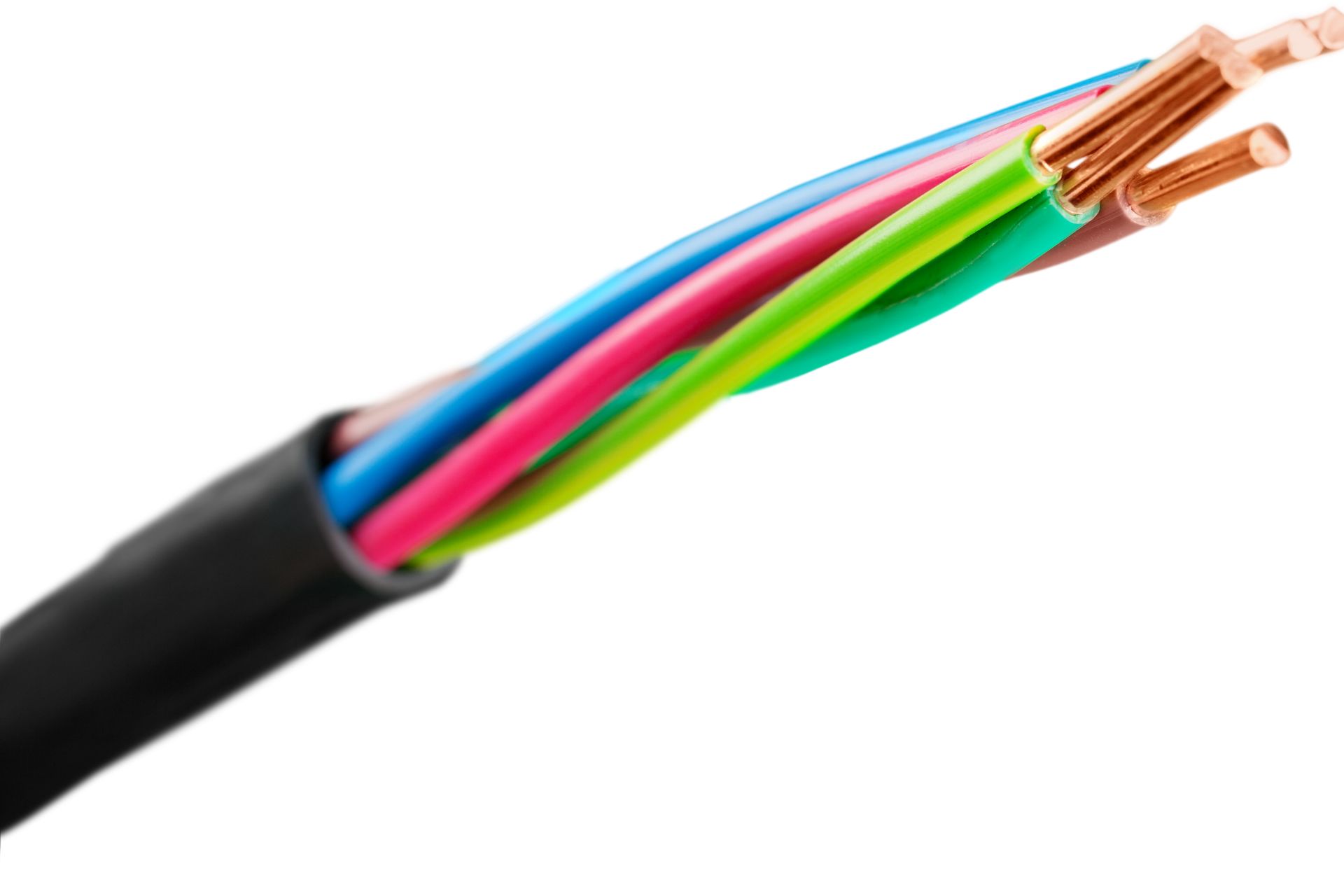Have you ever wired an electronic device such as a light switch or wall outlet? Which wires did you connect first? Does it even matter? What happens when you connect the wrong wire first? This guide will tell you.
Which Wire Should You Connect First To Prevent An Electric Shock?
You should connect the ground wire first. This makes sense. Look at the plug of any device in your vicinity. The ground prong is the longest. Therefore, it makes contact with the circuit before the neutral and hot prongs. This is because the ground wire provides protection. It creates a path for the current to follow when things go wrong.
However, the order doesn’t matter if you took the necessary precautions at the start. That includes de-energizing the circuit.
The order is only important if you have a live circuit. But this is not always an option. Some regions have laws that prohibit consumers from working on energized circuits. You may also find similar regulations in commercial settings.
If your job permits contractors to wire live circuits, it will also provide protocols detailing the safest way to install wires. Those protocols may also specify the wiring order.
Why and When Do You Need To Hook Up The Wires In Order?
1). With data connectors, you connect the shield and ground pins first. The supply comes last. This applies to other low-power applications.
2). Conventional appliances like microwaves and coffee makers have plugs with a longer ground prong, proving once and for all that ground wires should engage the circuit before any other line. You should also make the ground wire the last conductor to disengage from the circuit.
3). The order doesn’t matter for three-phase connectors that exceed 380/400V because you have to unplug the supply breaker beforehand. You don’t have a choice.
Naturally, the order doesn’t matter if you switch the power off. De-energizing the circuit eliminates the electrocution hazard. If you want to wire a device in a commercial setting, check the work order.
Do you have the option of de-energizing the circuit? Some locations require an uninterrupted power supply. Therefore, you can’t switch the power off before commencing your repairs and installations.
Administrators in situations of this sort will hire licensed electricians that have experience with projects that involve energized circuits.
What Happens If I Connect The Wrong Wires First?
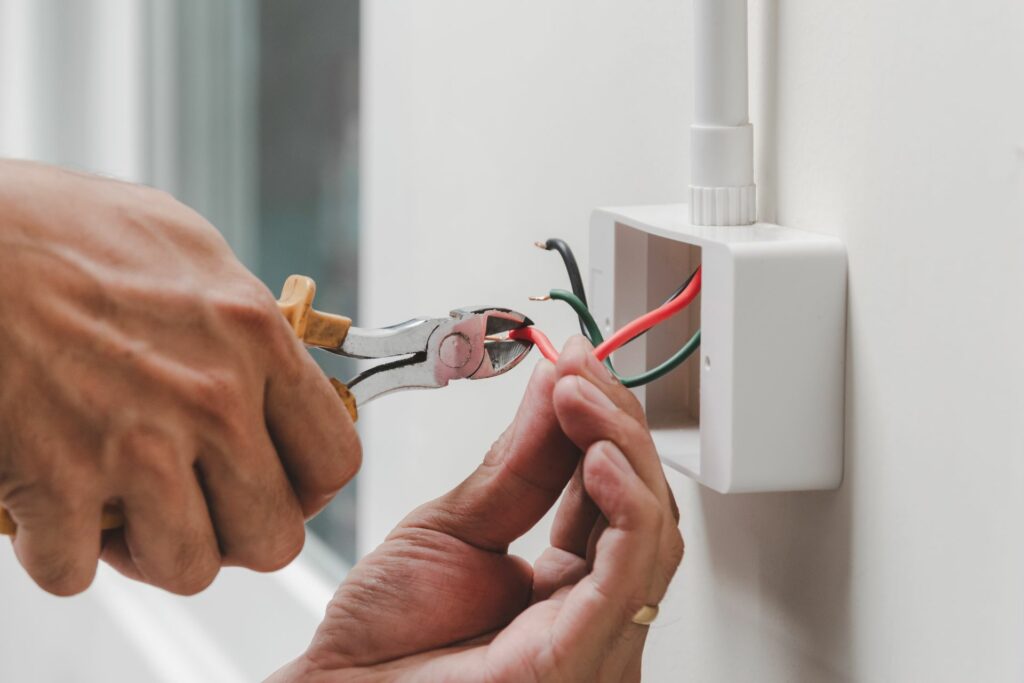
Your biggest concern is electrocution. Electricity can cause serious harm when it flows through your body. Death is not out of the question.
Besides stopping your heart, electrocution can produce severe burns. If the shock happens to a person on a table or ladder, the fall may kill them. This is why contractors discourage laypeople from performing electrical installations and repairs.
It doesn’t take much to receive a shock. All you need is two conductors at varying voltages. Connecting these conductors will permit the current to jump from one wire to the other.
The black wire in a conventional US circuit has 120V, while the white line is at 0. You can connect the black and white wires by touching the conductors with your bare hands.
This allows the electricity to pass through you. You can expect similar results if you touch a live and grounded object simultaneously. Simply put, electrocution is a prominent problem for anyone that has to handle a live wire.
Therefore, it is safer to shut the power off. A de-energized circuit is not a threat to the layperson, regardless of the order in which they install the wires. If the circumstances have compelled you to work on an energized circuit, make the live wire the last conductor you add.
If you wire the ground conductor first, it can provide sufficient protection in the event of an accident.
How Do You Avoid Getting Shocked Even If You Don’t Connect Wires In Order?
Many laypeople and contractors connect wires in the wrong order, and yet, they are alive and well. How come? They probably used the following tips and techniques to make their tasks less dangerous:
1). Disconnect The power
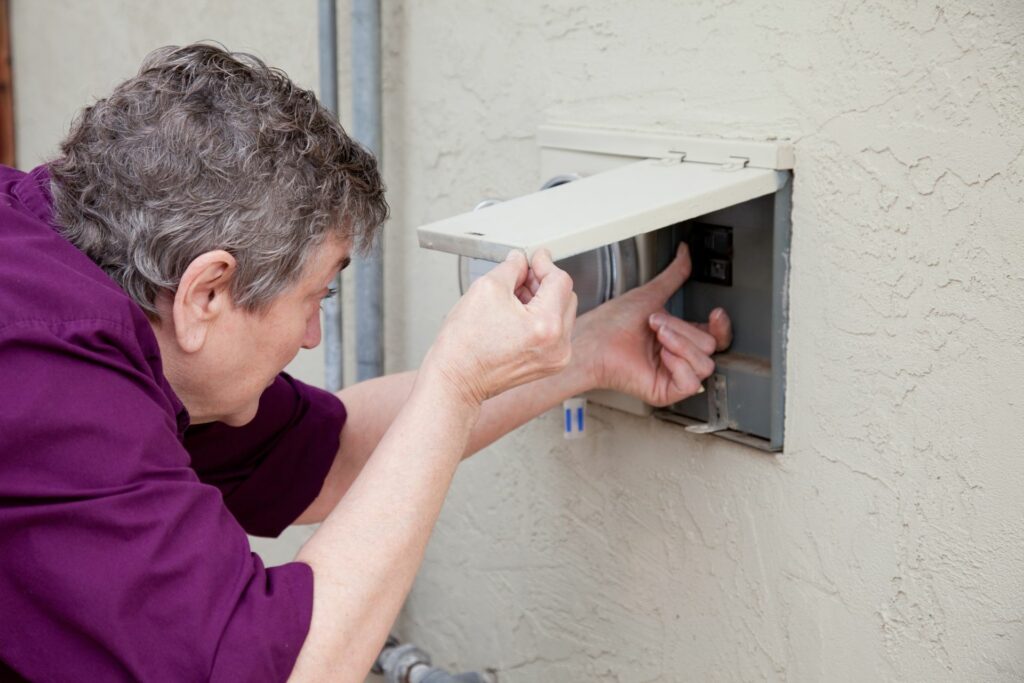
The wiring order doesn’t matter on a de-energized circuit. You have to connect the ground wire first on a live circuit because you may energize the shell of your appliance if you accidentally touch it with the hot conductor.
But these concerns don’t matter if the circuit is dead. Use the main breaker to shut the power off. If you still mistrust the circuit, use a voltage tester on the wires.
A tester will determine whether or not electricity is still running through the wires. Voltage testers are simple devices. You can test a wire by touching it with the probe.
2). Hire An Expertise
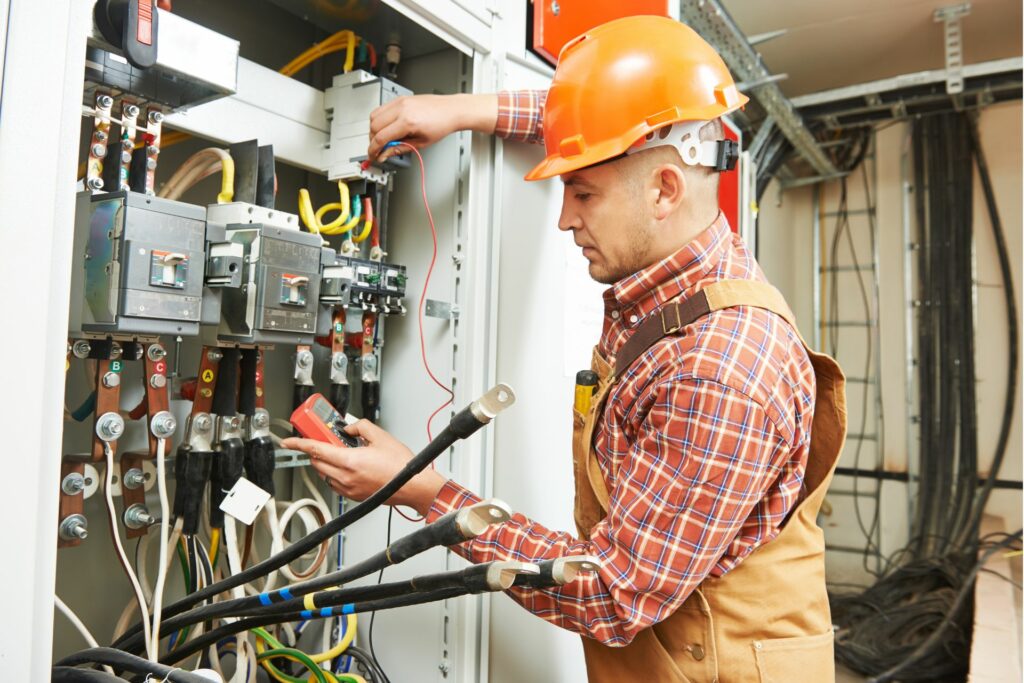
What sort of experience do you have? Do you understand how electricity works? Even if you have a passion for DIY projects, you can’t afford to gamble with electrical installations.
If you don’t know what you’re doing, hire a professional. I want you to know your limits. What are you trying to do? The average homeowner can replace lights, switches, and sockets with relative ease.
But you can’t trust them to rewire heavy-duty devices such as washers and dryers. If you’re overwhelmed, take that as a sign that you need help. At the very least, ask an electrician to supervise your work. They can guide you accordingly.
3). Use Insulated Tools
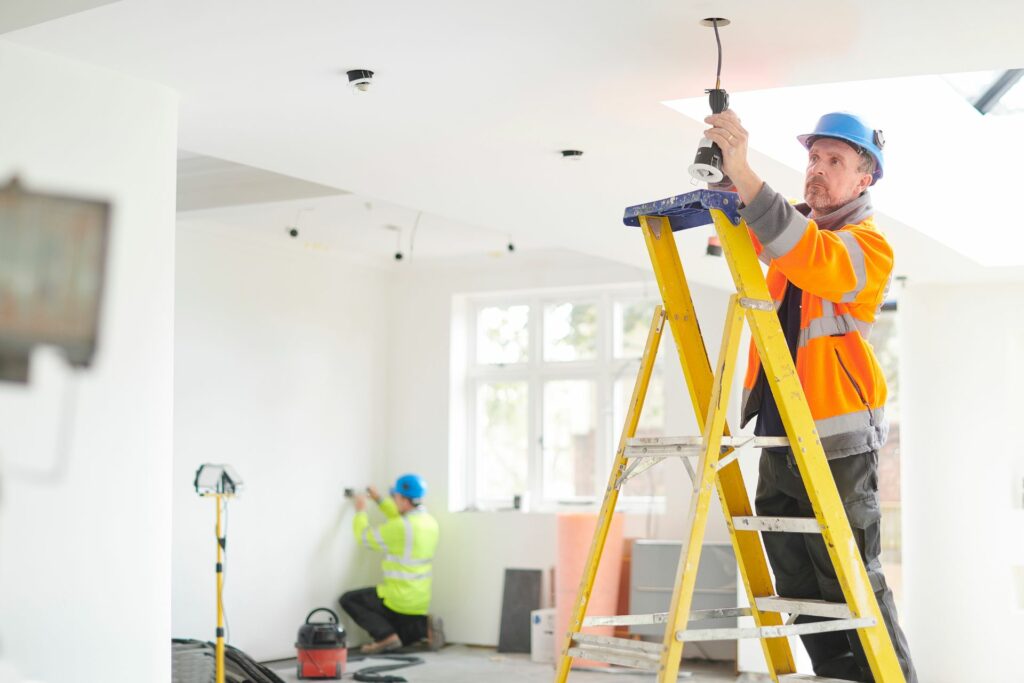
It is not enough to secure the correct tools. You require insulated tools. This is true for both energized and de-energized circuits. A metallic tool can lead to electrocution if it connects your body to the hot wire.
If you’re not tall enough, use fiberglass ladders. Metallic ladders are hazardous because they can funnel electricity through your body. You can find an insulated version of every tool you can imagine.
4). Wear Protective Equipment
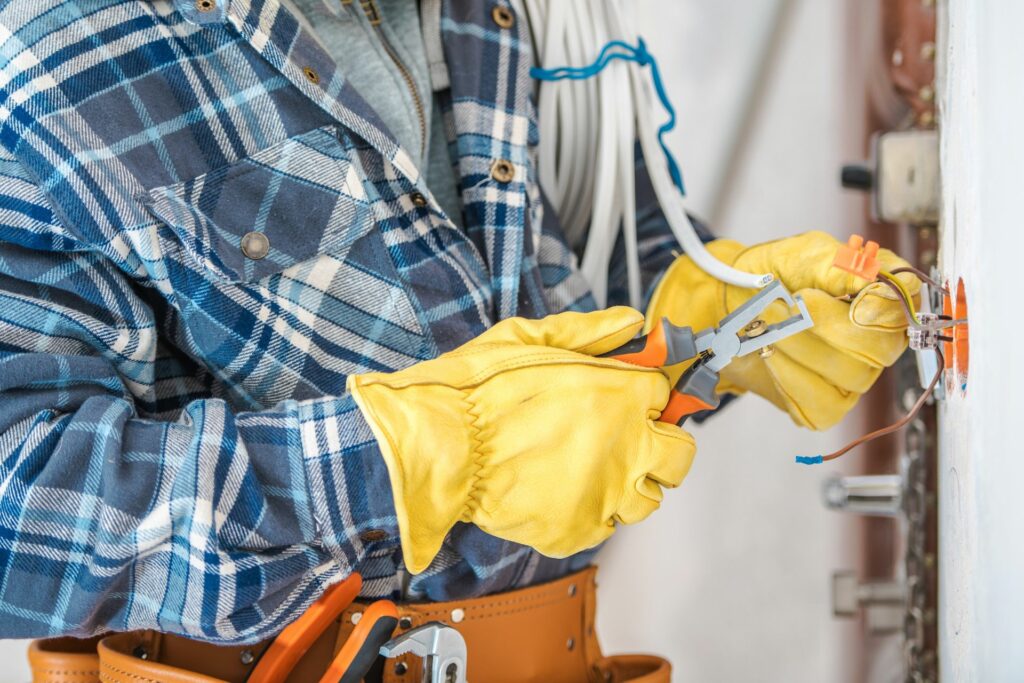
This goes without saying. You need personal protective equipment such as gloves and boots. This also goes without saying. You should aim for rubber gloves and boots.
You can’t ignore these items simply because you de-energized the circuit. What if the breaker couldn’t shut the power off? What if someone reconnected the power?
You can’t take any chances. Protective equipment will give you peace of mind. You can touch a bare wire without exposing your body to unnecessary harm.
5). Don’t Touch Hot Wire
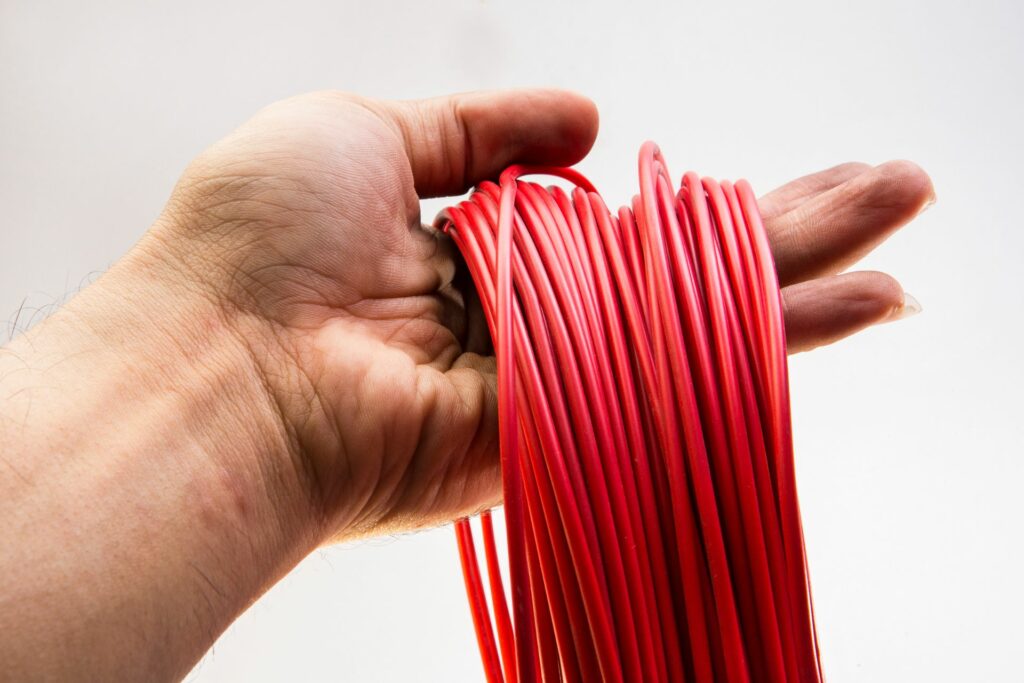
If you don’t have protective equipment and the circuit is energized, don’t touch the live wire with your bare hands. In fact, don’t touch any wires with your bare hands.
Cap the live conductors to make them less dangerous. You can also apply electrical tape.
6). Keeps Your Hand Dry Before Commencing Your Project
You don’t want to mix moisture with electricity. Don’t stand in water while handling bare conductors. You should also keep your hands dry before commencing your project.
Of course, this won’t happen if you have rubber gloves and boots. But if various circumstances have compelled you to perform installations and repairs without boots and gloves, stay away from water.
7). Ask Someone To Assist You
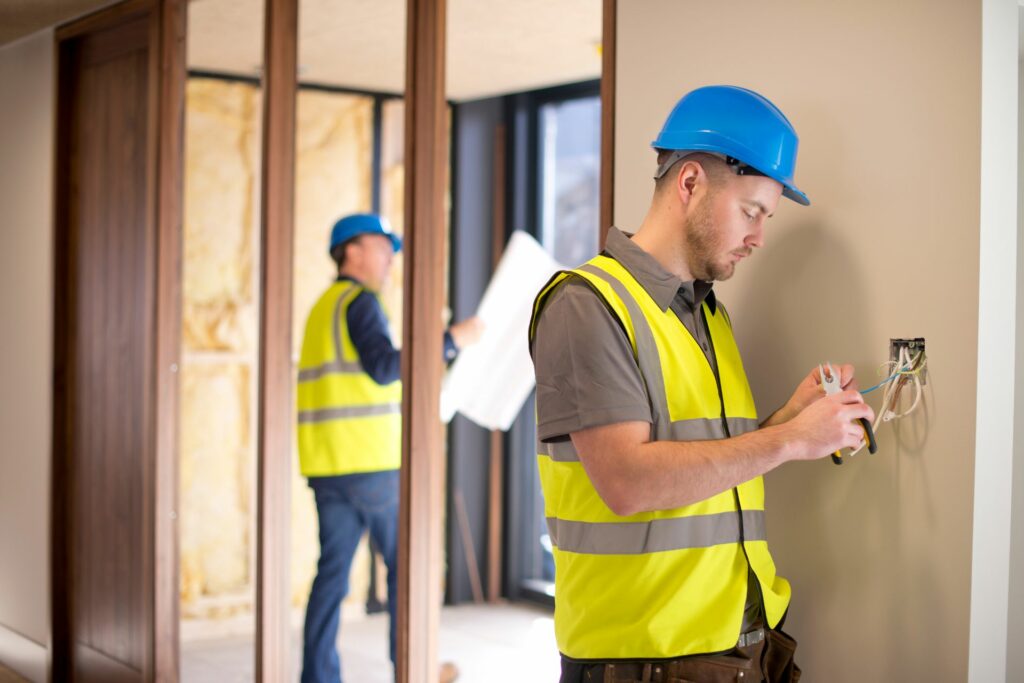
Even if you have experience with electricity, you are better off asking someone to assist you. Your helper can ensure that you’ve applied all the necessary precautions. That includes standing guard over the panel to prevent other people from reconnecting the power.
They can also take action if things go wrong. For instance, they will call emergency services if an accident occurs and you get shocked.

